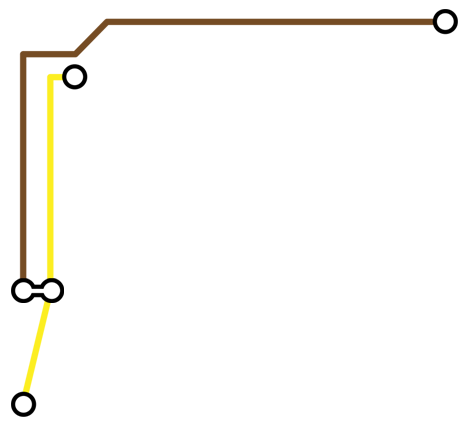Teaching While Learning—A Practical Approach
Introduction
I entered graduate school, and teaching, having completed my BA as a non-traditional student. When I began teaching in the fall of 2011, I knew that I wanted to be the kind of teacher who encouraged her students to do their best. I wanted to create a relationship where my students felt comfortable coming to me for help, and I wanted to create a community of writers that looked to each other for support. I feel I have been successful in my f2f classes. Previous students continue to seek me out for help, and my students have formed many friendships. However, my greatest challenge as a teacher has been in creating an online course where students recognize the class as a community, and where they view me as something more than a nameless/faceless entity cleverly hidden behind the curtain of electronic anonymity. During 2013, I was provided with several opportunities that both challenged me as an instructor and provided me with the techniques needed for successful online course creation. Further, the best practices I learned for teaching in an online environment continue to be useful in my f2f teaching.
Beginnings
In the spring of 2013 I agreed to teach an online English 102 class at the University of New Mexico. It was my fifth semester of teaching and the third time I had taught 102, but it was the first time I had taught online. The University of New Mexico was also in the pilot phase of the new Blackboard Learn System, and I was assigned a course designer that helped me set up my online course. Although our New Media department was extremely helpful in teaching me how to use the online system, I did not receive much training in the pedagogy of online education. As a result, I created an online class that was nearly identical to my f2f class. I took materials that I had used from previous f2f classes and used them for my online students with very little change. All assignments were text-based assignments. I had weekly discussions and my writers were required to create an initial response and to respond to two of their peers. I did not participate in these discussions. I feel that many of my students posted their response and then responded to the first two posts they read. They considered the requirement “done” and did not participate in the discussion further. In looking back at that semester, I recognize that the discussion boards did not do enough to create student trust in me, nor did it foster a sense of community among the students. Students sometimes saw the discussion boards as “busy work” and something they had to do because it was required. The discussion prompts weren’t planned in such a way as to create a real discussion.
At the beginning of the semester I decided to create instructional videos for each assignment. This seemed like a good way for me to approach the teaching of the writing assignment. I have no way of knowing how many of my students actually watched the videos or found them useful. At the end of the semester my students overall did well; however, I was left with the feeling that I had not done enough to create a community. I felt frustrated because I also felt very removed from my students. My ethos as an instructor is generated by the interaction I have with my students, and the contact is one of the things I love most about teaching. I really felt that I had failed as an instructor and that my students deserved better. Because I wanted to become a better online teacher I submitted my interest to teach in the new eComp English 102 course. I was very interested in learning skills that would help me as a writing instructor that I could also use someday when I have the opportunity to teach medieval literature, and I was excited for Dr. Tiffany Bourelle’s online pedagogy seminar, which was required for anyone teaching in the eComp classes. Because of my previous online teaching experience, I was assigned as the lead teacher in an already designed course shell. This provided me the opportunity to learn best practices while also teaching the material.
Teaching and Learning
Teaching in a course designed by someone else was exciting, and at times it was somewhat challenging. On the one hand, it was nice to teach using this model with materials that had already been created. This allowed me the opportunity to explore the pedagogy and theory of online education in an existing environment. On the other hand, I experienced some difficulties. For example, at the beginning of the semester I sometimes felt like I was learning the material along with my students. Because the material was not my own I did not feel as connected to the curriculum as I normally do in the classes I have created. Fortunately, the course designers created a platform that allowed for instructor discretion. Because I was ultimately responsible for student learning and success, I could be flexible in allowing project extensions. Further, the assignments and rubrics allowed me to respond to students and student writing in a manner that was more reflective of my personal teaching philosophy.
The beauty of the eComp program is that instructors are fully supported while they learn to become online teachers. As a veteran teacher in the f2f environment, I feel comfortable designing my own courses. The challenge for me was to find a way to take what I knew of f2f teaching and use it in the online format. For example, I value student interaction; I enjoy a learning environment where students feel comfortable with each other and with me. As I’ve mentioned, my previous online teaching experience felt as though the entire class viewed each other as robots. We weren’t real to one another. However, because of the set-up created by Dr. Bourelle I was able to get to know my students. I didn’t need to do everything at once; learn the course management software, learn about eComp, learn about online pedagogy, create course materials, and the usual tasks associated with teaching such as responding to students and grading. Instead, I could rely on the materials created by Dr. Bourelle, which left me time to focus on developing my own ethos as an online instructor while preparing for future semesters of online teaching. I found it very useful to be able to take the material we discussed in class and then immediately put it to use in my online class. Because of my experience in the Spring of 2013, I recognize that it would have been quite difficult to attempt to create a class on my own while also learning the best practices of online teaching. The seminar provided me the space to learn and use new skills. As I prepared my materials for my spring course I was able to employ the readings and discussions from the seminar. The skills necessary for f2f instruction are not identical to online teaching, although there certainly is some overlap, and I feel that the pedagogy seminar helped me develop the skills necessary to teach a successful online class.
What next?
During the pedagogy class, I requested, and received, permission to pilot an online eComp English 220 expository writing course. The 220 course at UNM is listed as “An intermediate course with emphasis on rhetorical types, structure and style.” Instructors often use a theme to provide a structure for the writing students complete. The theme for my course was the rhetoric of apocalyptic and dystopian texts. When I taught this class in a f2f environment students were very excited, and we had rich discussions that led easily to discussions about writing and their assignments. This excitement transferred quite well to multimodal assignments I created. I also created a course where students were able to share their excitement and their knowledge of these texts.
The seminar course offered practical instruction that improved my understanding of the pedagogy behind online teaching. The course has also provided hands-on assignments designed to assist me in creating materials that helped my students creates texts beyond the alphabetic. During the fall of 2013, both as an instructor and as a student, it became very clear to me that I wanted to design my course in such a way as to encourage the creation of a community among my writers. As I built my course, I relied on the best practices as described by The Hanover Research Council (2009). Using the recommendations from The Hanover Research Council, and the best practices modeled by Dr. Bourelle in our seminar, I explored ways to “continuously manage students’ ideas and further facilitate interactions” (p. 17).
In order to foster a relationship between my students and me, and amongst my students, it became necessary to find ways to help them connect. It is important to me as an instructor to build a community. I feel that it can be easy for students to feel removed from each other, me, and the material. I used the work of Mary Grant and Heather Thornton (2007) who used the work of Beth Hewett and Christa Ehmann (2004) to create the principles necessary for successful online education. Grant and Thornton discuss seven principles. These principles all relate to student efficacy, student/staff interaction and communication, and student-centered learning. The challenge, for me, was to create an environment where students had clear expectations and were encouraged to look beyond the course for answers. Further, I needed to create an environment where students felt well-supported while they completed the tasks of the class.
To create the sense of community that is vital to my classroom I used a Facebook group page, Tumblr, and a non-threaded discussion board. All of these things created an environment where students felt comfortable sharing with me and with each other. In e-tivities: The Key to Active Online Learning, Gilly Salmon (2004) stated that “Combining new ideas about computer-mediated technologies and well-loved theories of learning and teaching results in fantastic possibilities but they need a little human time and energy to get them to work” (p. 4). In other words, instructors must be willing to put in the time, both in pedagogical training and in course planning, in order to make any e-tivity useful for the student. These activities also require instructor participation. In my English 220 course I required that students join a Facebook group that I created (students were allowed to have pseudonyms to protect their online identity). Students were also required to join Tumblr. In both instances I was an active participant. In order to help students understand the requirements for posts on both social media platforms, I created a series of screencapture videos that walked students through the steps of creating an account, joining the group, and creating posts. Students were required to post a certain number of times per week to each format. By the end of the semester students were posting more than the required, and they communicated openly with each other and with me. UNM uses Blackboard Learn, and I used the discussion tool in an attempt to create discussions among my students about the course content. In the past I had used the threaded view for discussion creation. Students were required to respond to the prompt and then respond to at least 2 peers. This would create 20 separate replies to my initial prompt, and some posts never received any replies as students would often reply to the first post before moving on to other work. Discussion boards are asynchronous by their very nature, and I believe that threaded views exacerbate that problem. In my 220 course I had students create all of their replies to my initial weekly prompt. This created a much richer conversation because all students were able to see what everyone in the class had written. On average students responded more than the minimum number of times. Further, student responses indicated that they remembered what their classmates had written in previous weeks, and the sense of community was much stronger.
During the course of the semester students were given increased responsibility in choosing the mode for their multimodal compositions. Mickey Hess (2007) argued that students best learn new multimodal skills when they are asked to choose from a small selection of options (p. 32). For example, the first assignment in my 220 course, a review, asked students to create either a blog post or a video. I created several instructional videos and we had several discussions on Blackboard about the multimodal choices. I provided a set of two choices for each major assignment, but I also allowed a student to create something beyond the options provided as long as they discussed their idea with me first. This provided another way for students and I to discuss their work. As the semester progressed, students were given more options in presenting their work in a multimodal format. At the end of the semester students were able to choose from two possible paper topics, a traditional literary analysis of a dystopian or apocalyptic text of their choice, or a survival plan presented as a proposal. Each assignment required an additional multimodal element. Although I provided ideas for students, they were asked to decide the best way to present their work. Students were asked to write a reflection, to be handed in with the final paper and multimodal element, which discussed the rhetorical situation for their multimodal piece, including the audience and what the student hoped to accomplish with the work. Because students were able to explore different types of multimodal creation throughout the semester they were comfortable choosing a method that would work for their paper. On our discussion boards and on social media, students discussed with each other and me various ways of presenting her or his work. Several discussion posts asked students to brainstorm ways that their arguments, whether it was a literary analysis or a survival plan, could be portrayed in a multimodal way. One of the more successful examples featured an “Emergency Broadcast,” such as what you would hear on interrupted television or radio. The student’s broadcast was so realistic that several listeners got chills while hearing about a fictitious zombie outbreak.
As a medieval literature scholar, I hope to someday have the opportunity to teach literature courses in an online environment. What I have learned about online teaching, and multimodal composition, will serve me well in all of the classes I will teach. The shortcomings I recognized after my first semester teaching online originated from the thinking that I could convert a traditional f2f class to an online class with little change or recognition that the two formats require different ways of thinking and planning. Good f2f instructors approach their class with careful planning, recognition of student needs, and awareness of the outcomes for the course (those set by the department and by the instructor herself). As I have learned, online instruction requires the same effort, but in very different ways. I have had to think of how to convert the many small things that are often spontaneous about a f2f class. Most importantly, I have had to recognize that it is possible to create a relationship with my students, but I have to be willing to explore new ways to do this.
Currently I teach all of my courses in a f2f setting at the University of Missouri-Columbia. Learning to use asynchronous discussion effectively in an online class has helped me use the Blackboard discussion boards in a way that fosters the creation of a community in my f2f classes. For example, one of the lessons learned in the pedagogy class, and discussed in relevant scholarship, is that the instructor should have a presence in the online discussions. Before the pedagogy class I would create discussion boards for my students that I did not participate in. When I became a participant in the discussions students saw me as more than just a robot on the other side of a computer screen. In my f2f class I obviously don’t have any issues with anonymity, however, when I become a part of the discussion outside of our regular meeting times students begin to see me as a resource that they can go to whenever they have questions or concerns about the course. Online pedagogy instruction has also helped me think more critically about the assignments I create. In my f2f classes I often have students create multimodal compositions, and I am better prepared to help my students navigate new ways of composing because of the training I received at UNM. During their time pursuing an undergraduate degree our students will be asked to create many assignments that “exceed the alphabetic” (Takayoshi & Selfe, 2007, p. 1). Learning to teach online and learning to teach multimodal composition helps instructors prepare her or his students for the demands of academic composition.
























